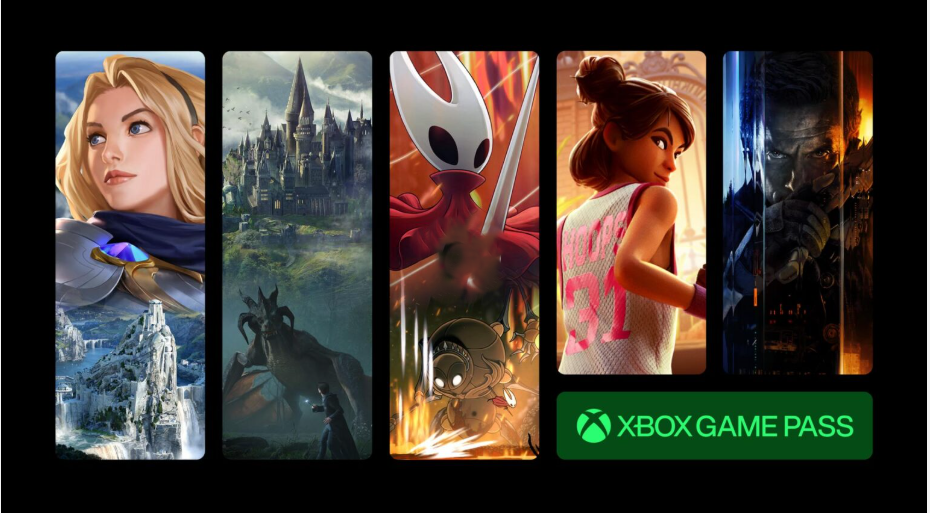We’re witnessing one of the most sweeping shifts in Xbox Game Pass history. Microsoft is rebranding its tiers, raising prices on its top plan, and expanding features across the the board. The changes go into effect immediately. Below, you’ll find a meticulous breakdown, comparisons, implications, and actionable advice.
1. New Tier Structure & Pricing
Microsoft has consolidated and rebranded its Game Pass subscription model, introducing three distinct plans: Essential, Premium, and Ultimate.
| Plan | Monthly Price (USD) | Change Status |
|---|---|---|
| Essential | $9.99 | Formerly “Core”; no price increase |
| Premium | $14.99 | Formerly “Standard”; no price increase |
| Ultimate | $29.99 | 50 % increase from prior $19.99 |
In addition, the PC Game Pass plan has its own revision: the price is increased from $11.99 to $16.49 per month (i.e. ~40% hike), though no added features are announced for PC alone.
The rationale seems to center on value bundling: the top tier is now packaged aggressively with exclusive benefits (see below), while the lower tiers are bolstered to reduce the barrier to entry.
2. Feature Mapping: What Each Plan Delivers
Here’s how Microsoft is repositioning the capabilities and benefits across the three new tiers:
Essential (Entry Tier)
- Access to 50+ curated games across console, PC, and cloud.
- Unlimited cloud gaming, allowing streaming access rather than download-only limitations.
- Online multiplayer (console), matching classic “Core” features.
- In-game benefits, including support for Riot Games titles
- Rewards with Xbox: earn up to $25/year in Store credit (25,000 points globally).
Premium (Mid Tier)
- Library of 200+ games, playable on console, PC, and cloud.
- Unlimited cloud streaming (i.e. full cloud access) for both owned and Game Pass games.
- For Microsoft-published games, access arrives “within a year” of launch (excluding Call of Duty).
- In-game benefits for Riot, Call of Duty: Warzone, League of Legends, etc.
- Rewards with Xbox: up to $50/year in store credit (50,000 points).
Ultimate (Top Tier)
- Comprehensive access to 400+ games across all platforms.
- Over 75 day-one releases per year, including all Microsoft-published titles at launch.
- Best-in-class cloud gaming (1440p support, shorter wait times).
- Bundled extras: Ubisoft+ Classics, EA Play, and Fortnite Crew (the latter coming Nov 2025)
- Rewards with Xbox: up to $100/year (100,000 points).
3. Cloud Gaming & Streaming Enhancements
One of the central pivots in Microsoft’s Game Pass overhaul is the expansion and enhancement of cloud gaming:
- Xbox Cloud Gaming exits beta status.
- 1440p streaming support introduced for Ultimate users (bitrate peaks ~27 Mbps for select games)
- Previously, cloud gaming was limited to only Ultimate; now Essential and Premium also include unlimited streaming.
- Ultimate gets the “lowest latency” allocation, meaning fewer wait times and prioritized server routing.
This shift suggests Microsoft wants cloud play to be a default expectation, not a luxury reserved for the highest tier.
4. Rewards & In-Game Benefits: The New Incentives Layer
Microsoft is weaving new layers of monetizable value into play, through the Rewards with Xbox system and in-game perks.
- Essential subscribers can earn up to $25/year in store credit.
- Premium users may claim up to $50/year in rewards.
- Ultimate tier opens up to $100/year in store credit for active users.
- In addition, purchase incentives:
• 4× points on Game Pass game purchases or add-ons
• Up to 30 % value back on select Game Pass titles
• 10 % points back on select library games and DLC
On top of that, in-game benefits (cosmetics, unlocks, bonuses) will be available in big titles like Riot Games, Call of Duty: Warzone, League of Legends, and Rainbow Six Siege X.
These rewards and perks serve to partially compensate for pricing shifts, while encouraging active usage and retention.
5. Game Lineups: What’s Available Now
Notable Titles in Ultimate (Available Immediately)
The Ultimate tier sees a massive influx of titles on day one and across platforms. Among the offerings:
- Hogwarts Legacy, available across cloud, PC, and console
- Over 45 new additions today, including Assassin’s Creed II, Assassin’s Creed IV: Black Flag, Prince of Persia: The Lost Crown, Far Cry 3, etc.
- Ubisoft+ Classics titles like Ghost Recon Breakpoint and Assassin’s Creed entries are now included.
- Fortnite Crew (Battle Pass + V-Bucks) will be rolled into Ultimate by November 18.
Premium & Essential Shared Titles
- Essential includes staple PC/console/cross-play titles like Hades, Stardew Valley, Warhammer 40,000: Darktide, Cities: Skylines Remastered
- Premium inherits all Essential titles while boosting the catalog up toward 200+ games.
- New additions to Premium include Diablo IV and Hogwarts Legacy, making full use of cross-platform access.
The increased breadth of game availability is a core part of Microsoft’s pitch: more titles usable across more platforms for every participant.
6. Migration & Transition Policies
To ease the shift:
- Existing Core subscribers will be automatically migrated to Essential at no additional cost.
- Existing Standard users will become Premium subscribers, again with no price change during their billing cycles.
- Ultimate users remain in Ultimate, but are subject to the new pricing.
- Microsoft notes that regional pricing and currency exchange adjustments may apply depending on country.
There is no mention of pro-rata refunds or grandfathered discounts for long-term renewals, so many users will face the full impact of the new rates when their billing cycles resume.
7. Community Reactions & Strategic Responses
Community Sentiment (from forums & social media)
- Many longtime Ultimate subscribers express frustration at the $10 hike, especially when the incremental bonus does not offer overwhelming new value.
- Some users note that purchasing games outright becomes cheaper than a $30/month subscription after only a few months.
- Several plan to downgrade to Premium, judging that day-one access is less compelling when weighed against the cost bump.
- A few criticize the perceived superficiality of bundled extras (e.g., Ubisoft Classics or Fortnite Crew) as insufficient justification for the leap.
Strategic Implications (For Microsoft & Competitors)
- Microsoft may be pushing for higher average revenue per user (ARPU) through Game Pass rather than hardware sales.
- The enhanced rewards system is designed to lock in retention, making it more psychologically “painful” to cancel.
- Rivals like PlayStation Plus, Nintendo Switch Online, or third-party subscription services may be pressured to respond or reposition.
- The push toward first-party exclusives and day-one titles is now more visible in a subscription model.
8. What This Means for You (and Your Wallet)
- Evaluate your usage: If you seldom play new releases, Premium may suffice.
- Break-even cost comparison: At $29.99, if you play fewer than 2–3 premium games, you might be better off buying selectively.
- Leverage the rewards system: Active play maximizes return in store credit.
- Watch regional pricing: In many countries, local equivalents may sway value assessments.
- Time your downgrade/upgrades: You may want to transition tiers at a billing boundary for optimal value.
9. Final Thoughts
Microsoft’s October 2025 overhaul of Xbox Game Pass is bold. It raises the stakes of subscription gaming and pushes cloud play into the mainstream. While the price increase for Ultimate is steep, the addition of more content, better streaming capabilities, and elevated rewards aim to justify the shift.
For many users, the sweet spot may now lie in the Premium plan — especially those who value variety over immediate access. But hardcore fans and multi-platform players will still find Ultimate compelling, albeit at a higher cost.
This marks a turning point in how Microsoft monetizes gaming. And for players, it demands a fresh evaluation of value, loyalty, and how we engage with games in the subscription age.


